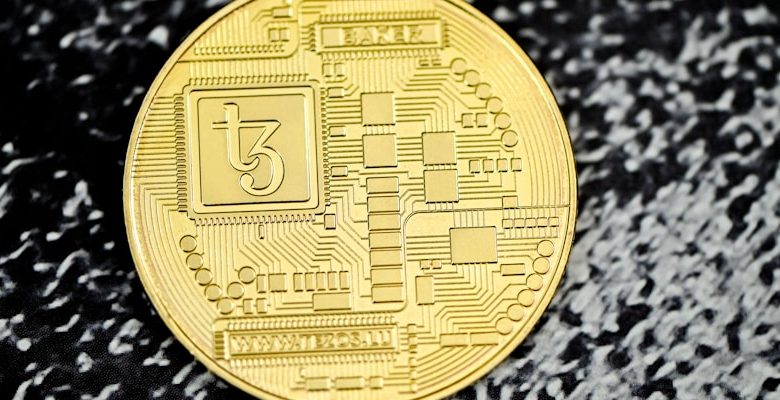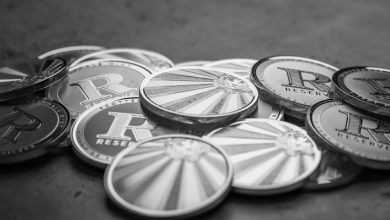The Role of Stablecoins in Decentralized Finance

- Understanding the concept of stablecoins
- Exploring the benefits of stablecoins in decentralized finance
- The role of stablecoins in reducing volatility in DeFi
- Comparing stablecoins to traditional fiat currencies
- Challenges and limitations of using stablecoins in DeFi
- Future outlook: The evolving landscape of stablecoins in decentralized finance
Understanding the concept of stablecoins
Stablecoins are a type of cryptocurrency that is designed to have a stable value, typically pegged to a fiat currency such as the US dollar or euro. Unlike other cryptocurrencies like Bitcoin or Ethereum, which can be highly volatile, stablecoins aim to provide price stability, making them more suitable for everyday transactions and store of value.
These digital assets are often backed by reserves of the fiat currency they are pegged to, held in a bank account or other secure financial institution. This backing helps ensure that the stablecoin maintains a stable value, as holders can always redeem their stablecoins for the underlying fiat currency at a fixed exchange rate.
Stablecoins play a crucial role in decentralized finance (DeFi) by providing a reliable medium of exchange and store of value within the ecosystem. They enable users to transact in cryptocurrencies without having to worry about price fluctuations, making them particularly useful for decentralized lending and borrowing protocols, decentralized exchanges, and other DeFi applications.
Overall, stablecoins offer a bridge between the traditional financial system and the world of decentralized finance, providing a stable and reliable means of transacting and storing value in the rapidly evolving cryptocurrency landscape.
Exploring the benefits of stablecoins in decentralized finance
Stablecoins play a crucial role in decentralized finance (DeFi) by providing a reliable and secure means of exchanging value without the volatility associated with traditional cryptocurrencies. These digital assets are pegged to stable fiat currencies like the US Dollar, Euro, or Japanese Yen, ensuring price stability and predictability for users.
One of the key benefits of stablecoins in DeFi is their ability to facilitate faster and cheaper transactions compared to traditional banking systems. Users can transfer value across borders in a matter of seconds, bypassing intermediaries and reducing fees. This efficiency is especially valuable in the context of DeFi, where speed and cost-effectiveness are essential.
Moreover, stablecoins enable users to access a wide range of financial services in the DeFi ecosystem, such as lending, borrowing, trading, and earning interest. By using stablecoins as collateral, individuals can participate in decentralized lending protocols and earn passive income on their holdings. This opens up new opportunities for individuals who may not have access to traditional banking services.
Another advantage of stablecoins is their transparency and immutability, as transactions are recorded on a public blockchain for all to see. This level of accountability helps to build trust among users and reduces the risk of fraud or manipulation. Additionally, stablecoins are programmable, allowing developers to create sophisticated financial products and smart contracts that operate autonomously without human intervention.
In conclusion, stablecoins are a fundamental building block of DeFi, providing stability, efficiency, accessibility, transparency, and programmability to the decentralized financial ecosystem. As the adoption of DeFi continues to grow, stablecoins will play an increasingly important role in shaping the future of finance.
The role of stablecoins in reducing volatility in DeFi
Stablecoins play a crucial role in reducing the volatility that is often associated with DeFi platforms. By pegging their value to a stable asset such as the US dollar or gold, stablecoins provide a reliable store of value within the decentralized finance ecosystem. This stability helps to mitigate the risk of price fluctuations that can impact the value of assets held within DeFi protocols.
One of the key benefits of stablecoins in DeFi is their ability to facilitate seamless transactions without the need to convert between different cryptocurrencies. This can help to streamline the trading process and reduce the friction associated with swapping volatile assets. Additionally, stablecoins can be used as a hedge against market volatility, allowing users to protect their investments during periods of uncertainty.
Furthermore, stablecoins can serve as a bridge between the traditional financial system and the decentralized finance space. By providing a familiar unit of account that is not subject to wild price swings, stablecoins can help to onboard new users to DeFi platforms and encourage greater adoption of these innovative financial tools. In this way, stablecoins play a vital role in expanding access to decentralized finance and creating a more inclusive financial ecosystem for all participants.
Comparing stablecoins to traditional fiat currencies
Stablecoins are digital assets designed to maintain a stable value by pegging them to traditional fiat currencies. This pegging mechanism ensures that stablecoins are not subject to the same volatility as other cryptocurrencies like Bitcoin or Ethereum. When comparing stablecoins to traditional fiat currencies, there are several key differences to consider:
- Stability: Stablecoins are designed to have a stable value, making them a more predictable store of value compared to traditional fiat currencies.
- Accessibility: Stablecoins can be easily transferred and exchanged on blockchain networks, providing users with greater accessibility and faster transaction times compared to traditional banking systems.
- Transparency: Blockchain technology allows for greater transparency in stablecoin transactions, providing users with a clear and immutable record of their transactions.
- Security: Stablecoins are often backed by reserves of fiat currency or other assets, providing users with a level of security that may be lacking in traditional banking systems.
- Global Reach: Stablecoins can be used by anyone with an internet connection, making them accessible to a global audience without the need for a traditional bank account.
Overall, stablecoins offer a compelling alternative to traditional fiat currencies, providing users with a stable, accessible, transparent, and secure means of transacting value on blockchain networks. As decentralized finance continues to grow, stablecoins are likely to play an increasingly important role in enabling a more efficient and inclusive financial system.
Challenges and limitations of using stablecoins in DeFi
While stablecoins play a crucial role in decentralized finance (DeFi) by providing a reliable store of value and a medium of exchange, there are several challenges and limitations associated with their use in this context.
- One of the main challenges is the centralized nature of many stablecoins, which goes against the core principles of DeFi. Centralization can lead to issues such as censorship, regulatory scrutiny, and counterparty risk.
- Another limitation is the lack of transparency and auditability in some stablecoin projects, making it difficult for users to verify the collateral backing the stablecoins.
- Volatility in the value of stablecoins can also pose a challenge, as it can affect the stability of DeFi protocols and the overall ecosystem.
- Furthermore, the reliance on centralized exchanges for liquidity can create bottlenecks and introduce points of failure in the DeFi ecosystem.
- Lastly, regulatory uncertainty around stablecoins can hinder their widespread adoption in DeFi, as legal and compliance issues remain a concern for both users and developers.
Despite these challenges and limitations, stablecoins continue to play a vital role in DeFi, providing a bridge between the traditional financial system and the decentralized world. As the technology and regulatory landscape evolve, addressing these issues will be crucial in unlocking the full potential of stablecoins in decentralized finance.
Future outlook: The evolving landscape of stablecoins in decentralized finance
The future outlook for stablecoins in decentralized finance is promising as the landscape continues to evolve rapidly. With the increasing popularity and adoption of stablecoins, we can expect to see a greater variety of stablecoin options available to users. This will provide more flexibility and choice for participants in the decentralized finance space.
As the demand for stablecoins grows, we anticipate that more innovative features and functionalities will be introduced to enhance the user experience. This could include improved stability mechanisms, enhanced security measures, and greater interoperability with other decentralized finance protocols.
Furthermore, the regulatory environment surrounding stablecoins is likely to become clearer in the coming years. This will provide greater certainty and confidence for users and investors, leading to increased adoption and usage of stablecoins in decentralized finance applications.
In conclusion, the evolving landscape of stablecoins in decentralized finance presents exciting opportunities for growth and innovation. With a focus on improving usability, security, and regulatory compliance, stablecoins are poised to play an increasingly important role in the decentralized finance ecosystem.



